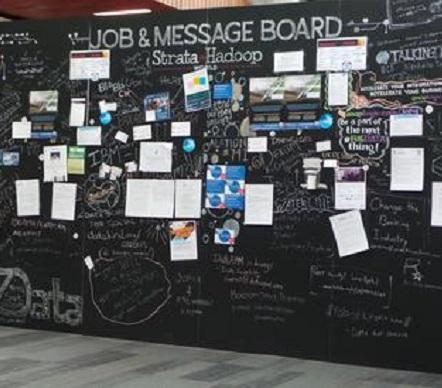Intel's Workforce Diversity Efforts Hampered By LayoffsIntel's Workforce Diversity Efforts Hampered By Layoffs
Despite progress in some areas of its diversity efforts, Intel encountered a slight decline in the number of under-represented minorities working for the company. The main cause is the company's own efforts to restructure, which triggered a large number of layoffs earlier this year.


9 Tips For Hiring Data Science Talent
9 Tips For Hiring Data Science Talent (Click image for larger view and slideshow.)
Intel's desire to increase diversity among its workforce represents an initiative being embraced by a wide swath of tech companies. However, the chip giant recently encountered an additional layer of complexity in its efforts.
IT hiring managers and CIOs should take note, since the challenges encountered by Intel can happen in any business.
Earlier this year, Intel announced it would cut 11% of its workforce to restructure the company away from PCs and toward cloud computing, Internet of Things (IoT), memory and Field-Programmable Gate Array (FPGA). Its diversity numbers were affected as a result of the shift in focus, company executives said.
"This company-wide global restructuring has resulted in some fluctuations in our year-to-date hiring, representation, and exit data," according to Intel's mid-year diversity report, which not only gives a six-month update on the company's hiring numbers, but also includes data dating back to December 2014.
In 2015, Intel announced a $300 million initiative to bring its US workforce of women and under-represented minorities to a level comparable to society at large. Company executives recently noted it still planned to make the effort to achieve its goal, despite the impact of the layoffs.
Under-represented minorities made up 12.3% of Intel's entire US workforce in June, down from 12.4% in December 2015.
That decline was largely felt among the company's Hispanic workforce, which declined to 8% of US workers in June from 8.4% in December. The percentage of Native Americans and African Americans hired during this period edged up, according to the report.
Under-represented minorities and women -- specifically those Intel identified as US workers in the early stages of their careers -- also posted a dip when comparing June to December figures.
For women, those numbers edged down to 27.9% of the total "early stage" US workforce from 28% in December, while for minorities they fell to 17.5% in June from 17.9% in December.
The effort in the high-tech industry to increase the number of woman and minorities in the workforce is proving hard to fulfill. Earlier this month, Apple released its own hiring figures that showed that it was able to increase the number of women and minorities within its workforce. Those numbers showed only slight gains.
[Read more about Apple's latest diversity numbers.]
IT hiring managers may become a little discouraged to see the extra effort they put into the process of finding and hiring IT women and under-represented minorities in tech take a hit when the pink slips are doled out in a round of layoffs.
Still, Apple and Intel show that no matter what plans are in place, it will take a long time to achieve diversity hiring goals.
For example, Intel's overall employment of women stood at 25.4% of its US workforce in June, compared with 24.8% in December 2015.
Meanwhile, women made up 21.2% of the company’s US-based IT workforce in June, up from 19.4% a year ago the same period, while underrepresented minorities working in tech for Intel faced a slight decline to 11.7% in June from 11.9% a year earlier.
The company stated:
One of the biggest learnings we've had this year was that, while there are positive trends in the hiring of underrepresented minorities and our representation of women, we have a ways to go on our journey to making Intel a truly inclusive place.
About the Author
You May Also Like






